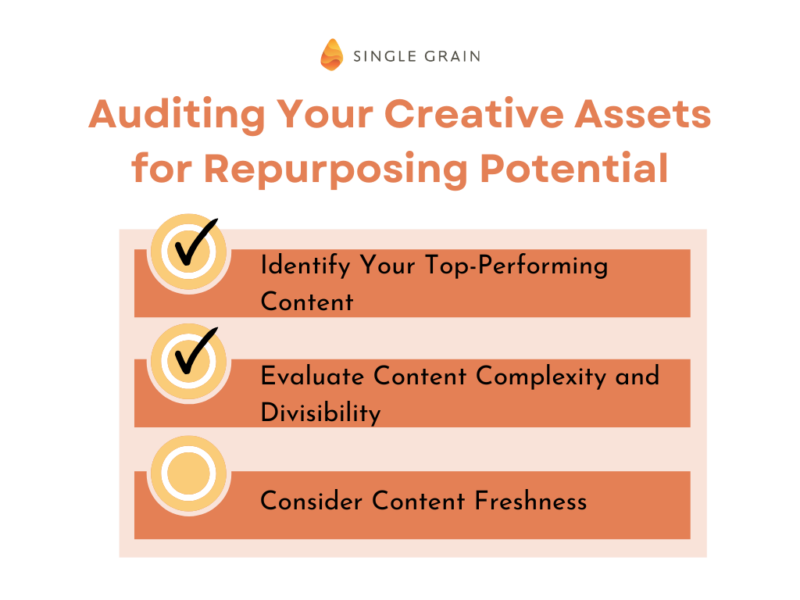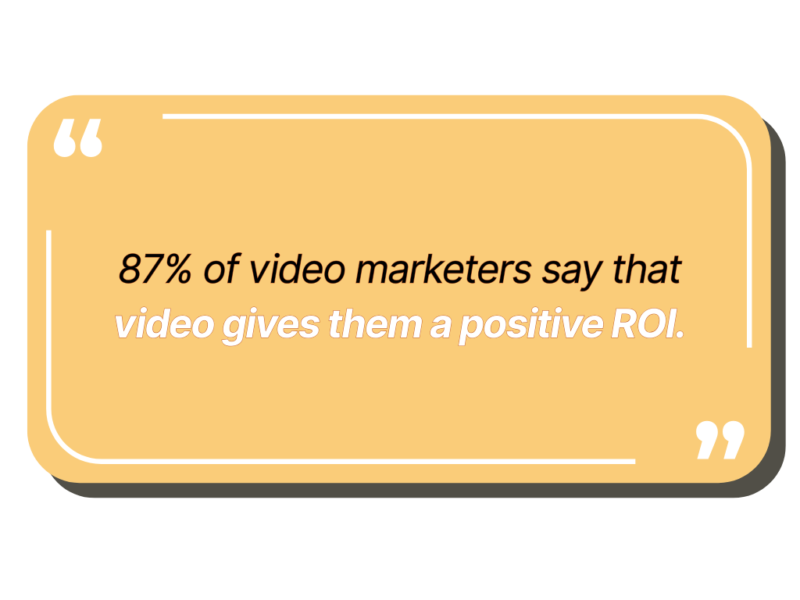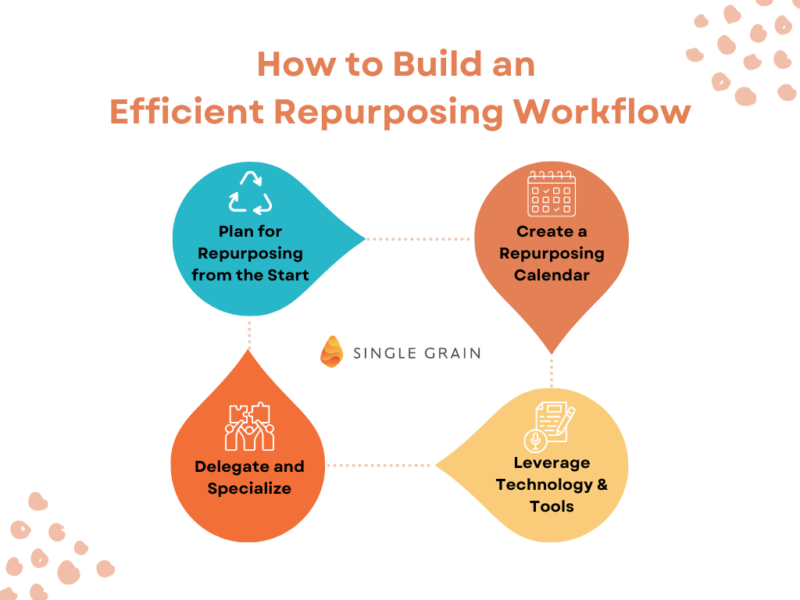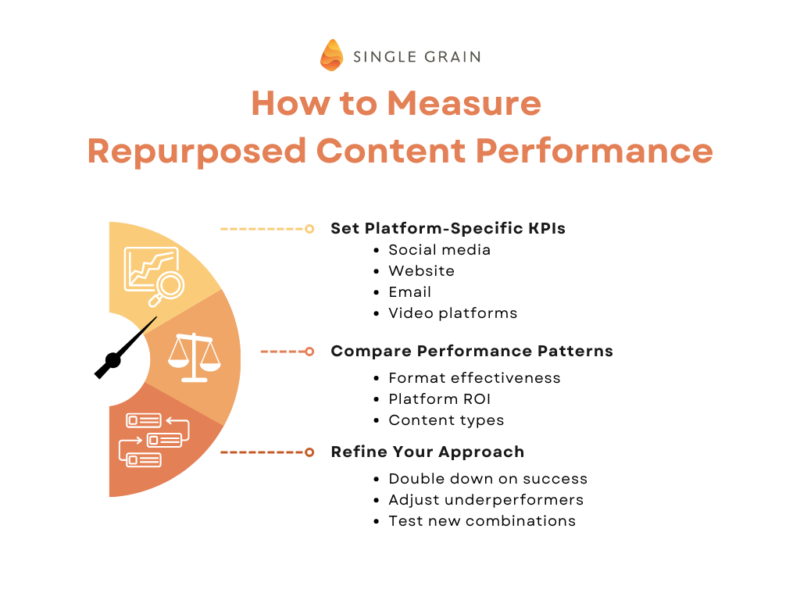Repurposing Creative Assets Across Multiple Platforms: A Tactical Guide
Creating high-quality assets from scratch for every platform is resource-intensive and often unnecessary in a content-saturated digital landscape. Smart marketers know that strategically repurposing creative assets can maximize ROI while maintaining brand consistency across channels. This tactical guide provides actionable strategies for transforming your existing creative assets for different platforms, showing you how to build an efficient repurposing workflow that saves time while expanding your content’s reach and impact.
Key Takeaways
- Audit for Repurposing Potential: Learn to identify which creative assets have the highest potential for successful repurposing.
- Platform-Specific Optimization: Understand how to effectively tailor content according to each platform’s requirements and audience expectations.
- Format Transformation Framework: Master converting content between formats (video, audio, text, graphics) while preserving core messaging.
- Workflow Efficiency: Implement systems that make repurposing a standard part of your content creation process rather than an afterthought.
- Performance Measurement: Refine your approach by tracking how repurposed content performs compared to original assets.
TABLE OF CONTENTS:
The Strategic Value of Content Repurposing
Creating fresh content consistently is challenging and resource-intensive. According to research from the Content Marketing Institute, producing enough high-quality content is the top challenge for 60% of B2B marketers. This is where strategic repurposing becomes invaluable.

Content repurposing isn’t just about recycling—it’s about reimagining and optimizing your creative assets for different contexts. When done effectively, repurposing can:
- Extend the lifespan of your best content
- Reach new audience segments who prefer different content formats
- Reinforce key messages through multiple touchpoints
- Improve SEO performance through content diversity
- Significantly reduce production costs and time investments
As Eric Siu, CEO of Single Grain, notes in his article on repurposing content, “By repackaging and redistributing your valuable content into different formats, you can extend its reach, attract a wider audience, and boost your organic traffic.”
Auditing Your Creative Assets for Repurposing Potential

Before repurposing your content, identify which assets are worth the investment. Not all content has equal repurposing potential.
1. Identify Your Top-Performing Content
Start by analyzing your existing content to determine which pieces have resonated most with your audience:
- Traffic metrics: Which content attracts the most visitors?
- Engagement metrics: Which pieces generate the most comments, shares, and time on page?
- Conversion metrics: Which assets drive the most leads or sales?
- Evergreen potential: Which content remains relevant regardless of time or trends?
Single Grain’s content marketing experts can help you analyze your content performance data to identify the assets with the highest repurposing ROI.
2. Evaluate Content Complexity and Divisibility
Some content types naturally lend themselves to repurposing better than others:
- Long-form content: Comprehensive guides, whitepapers, and in-depth articles can often be broken down into multiple smaller pieces.
- Data-rich content: Research reports and data-driven content can be transformed into various visual formats.
- Process-oriented content: Step-by-step guides and tutorials can be adapted for different learning preferences.
- Multi-faceted topics: Content covering several aspects of a topic can be split into focused pieces.
3. Consider Content Freshness
Assess whether the content needs updating before repurposing:
- Factual accuracy: Are statistics, facts, and references still current?
- Industry relevance: Have best practices or industry standards changed?
- Brand alignment: Does the content still align with your current messaging and positioning?
Platform-Specific Optimization Strategies
Each platform has unique characteristics that influence how content should be presented. Here’s how to optimize your repurposed assets for maximum impact across different channels:
1. Social Media Platforms
Different social networks have distinct content preferences and audience expectations:
| Platform | Optimal Content Types | Format Specifications | Audience Expectations |
|---|---|---|---|
| Professional insights, industry trends, case studies | Text posts (1,300 chars), articles, carousel posts, short videos (up to 10 mins) | Professional tone, data-backed insights, actionable advice | |
| Visual stories, behind-the-scenes, product showcases | Square/vertical images, Reels (up to 90 secs), Stories, carousels | High-quality visuals, authentic storytelling, concise captions | |
| TikTok | Educational content, trends, authentic moments | Vertical videos (15 secs to 10 mins), trending sounds | Entertaining, authentic, trend-aware content with quick hooks |
| News, quick tips, conversation starters | Text (280 chars), images, GIFs, short videos | Concise, timely, conversational content with clear value | |
| Inspirational, instructional, visual discovery | Vertical images (2:3 ratio), idea pins, infographics | Aspirational, solution-oriented content with clear visual appeal |
2. Website and Blog Content
When repurposing for your owned media channels:
- SEO optimization: Enhance repurposed content with targeted keywords and proper on-page SEO elements.
- Depth and comprehensiveness: Expand on ideas that were condensed for other platforms.
- Internal linking: Connect repurposed content to related resources on your site.
- Multimedia integration: Embed videos, audio, and interactive elements to enhance engagement.
Single Grain’s SEO services can help ensure your repurposed website content is optimized for search visibility while maintaining user engagement.
3. Email Marketing
When adapting content for email:
- Segmentation: Tailor repurposed content to specific subscriber segments based on interests and behaviors.
- Scannable format: Break content into digestible sections with clear headers and bullet points.
- Personalization: Customize introductions to make repurposed content feel fresh and relevant.
- Clear CTAs: Add specific calls-to-action that guide subscribers to the next step.
Format Transformation Framework
Converting content between formats requires a systematic approach to preserve value while adapting to new mediums.
1. Video to Multiple Formats
Long-form video content is a goldmine for repurposing:
- Blog posts: Transcribe videos and enhance with additional context, examples, and resources.
- Podcast episodes: Extract the audio and optimize sound quality for podcast platforms.
- Social snippets: Identify key moments and create 30-60 second clips for social media.
- Quote graphics: Pull impactful statements and create shareable quote images.
- Infographics: Transform data points and processes into visual representations.
According to research by Wyzowl, 87% of video marketers say that video gives them a positive ROI. By repurposing video content across multiple formats, you can maximize this return even further.

2. Written Content to Visual and Audio Formats
Transform text-based assets into more dynamic formats:
- Infographics: Convert statistics, lists, and processes into visual representations.
- Video scripts: Adapt comprehensive articles into engaging video content.
- Slide decks: Transform key points into presentation slides for platforms like SlideShare.
- Podcast episodes: Use articles as the basis for audio discussions, adding commentary and examples.
- Social carousels: Break down key points into a series of swipeable images.
3. Audio to Text and Visual Formats
Podcast episodes and audio content can be repurposed into:
- Blog posts: Transcribe and edit audio content into well-structured articles.
- Quote graphics: Extract memorable statements for social media sharing.
- Audiograms: Create waveform videos with captions for social media.
- Email newsletters: Summarize key points from audio discussions for email subscribers.
- Infographics: Visualize concepts and data points mentioned in audio content.
Building an Efficient Repurposing Workflow
To make repurposing a sustainable practice rather than an occasional effort, you need to establish a systematic workflow.

1. Plan for Repurposing from the Start
Integrate repurposing into your initial content planning:
- Content briefs: Include notes on potential repurposing opportunities in your content briefs.
- Asset organization: Structure original content to facilitate easy section extractions.
- Media quality: Ensure original assets are created with sufficient quality to support repurposing (e.g., high-resolution images, clean audio).
2. Create a Repurposing Calendar
Develop a schedule for transforming and distributing repurposed content:
- Platform rotation: Plan which platforms to prioritize for different repurposed assets.
- Timing strategy: Determine optimal intervals between original content and repurposed versions.
- Seasonal relevance: Align repurposing efforts with seasonal trends and business cycles.
3. Leverage Technology and Tools
Streamline the repurposing process with specialized tools:
- Transcription services: Use AI-powered transcription tools to convert audio/video to text.
- Design templates: Create platform-specific templates for consistent visual repurposing.
- Content management systems: Implement systems that facilitate content reuse and tracking.
- Automation tools: Use scheduling and automation tools to distribute repurposed content efficiently.
Single Grain’s content marketing team utilizes advanced tools and workflows to help clients implement efficient repurposing strategies that maximize content ROI.
4. Delegate and Specialize
Assign specific repurposing responsibilities based on team strengths:
- Format specialists: Designate team members who excel at specific formats (video editing, graphic design, writing).
- Platform experts: Leverage team members’ knowledge of particular platforms for optimization.
- Repurposing coordinator: Consider appointing someone to oversee the entire repurposing workflow.
Measuring Repurposed Content Performance

To refine your repurposing strategy over time, you need to track how repurposed content performs compared to original assets.
1. Set Platform-Specific KPIs
Establish relevant metrics for each platform:
- Social media: Engagement rate, shares, audience growth, click-through rate
- Website: Traffic, time on page, conversion rate, backlinks
- Email: Open rate, click-through rate, forward rate, conversion rate
- Video platforms: View duration, completion rate, engagement, subscriber growth
2. Compare Performance Patterns
Analyze how different types of repurposed content perform:
- Format effectiveness: Which transformed formats perform best relative to original content?
- Platform ROI: Which platforms deliver the highest return for repurposed content?
- Content types: Which original content types yield the most successful repurposed assets?
3. Refine Your Approach
Use performance data to optimize your repurposing strategy:
- Double down on success: Allocate more resources to the most effective repurposing channels.
- Adjust underperformers: Modify your approach for formats or platforms with weaker results.
- Test new combinations: Experiment with untried format transformations based on performance patterns.
Final Thoughts
Effective repurposing requires a deep understanding of platform-specific requirements, audience expectations, and format optimization. When done right, repurposing creates a cohesive cross-platform presence that reinforces your brand message while respecting the unique context of each channel.
Ready to implement a more strategic approach to content repurposing? Single Grain’s conversion rate optimization experts can help you develop a comprehensive repurposing workflow that maximizes the impact of your creative assets across all relevant platforms.




